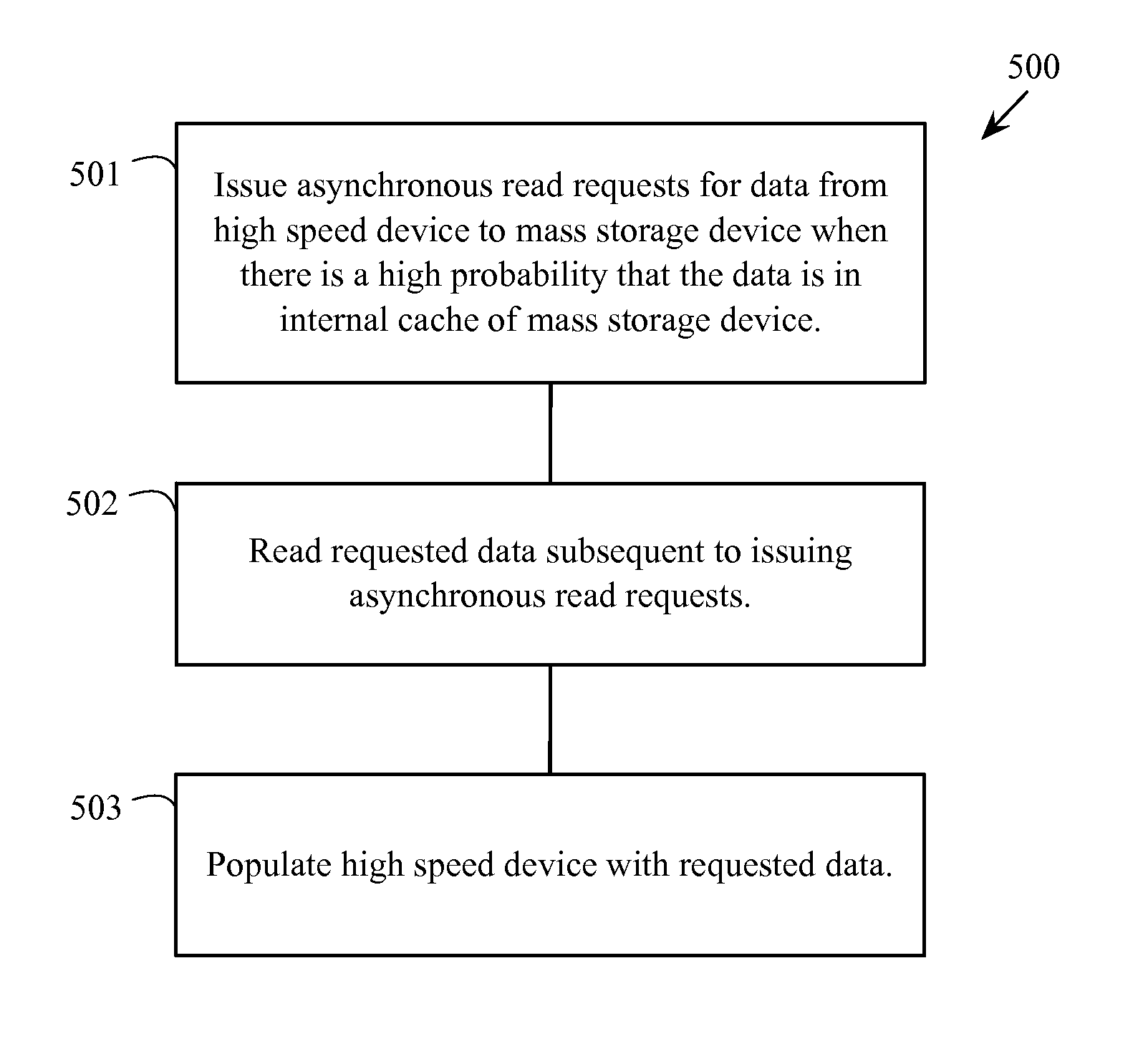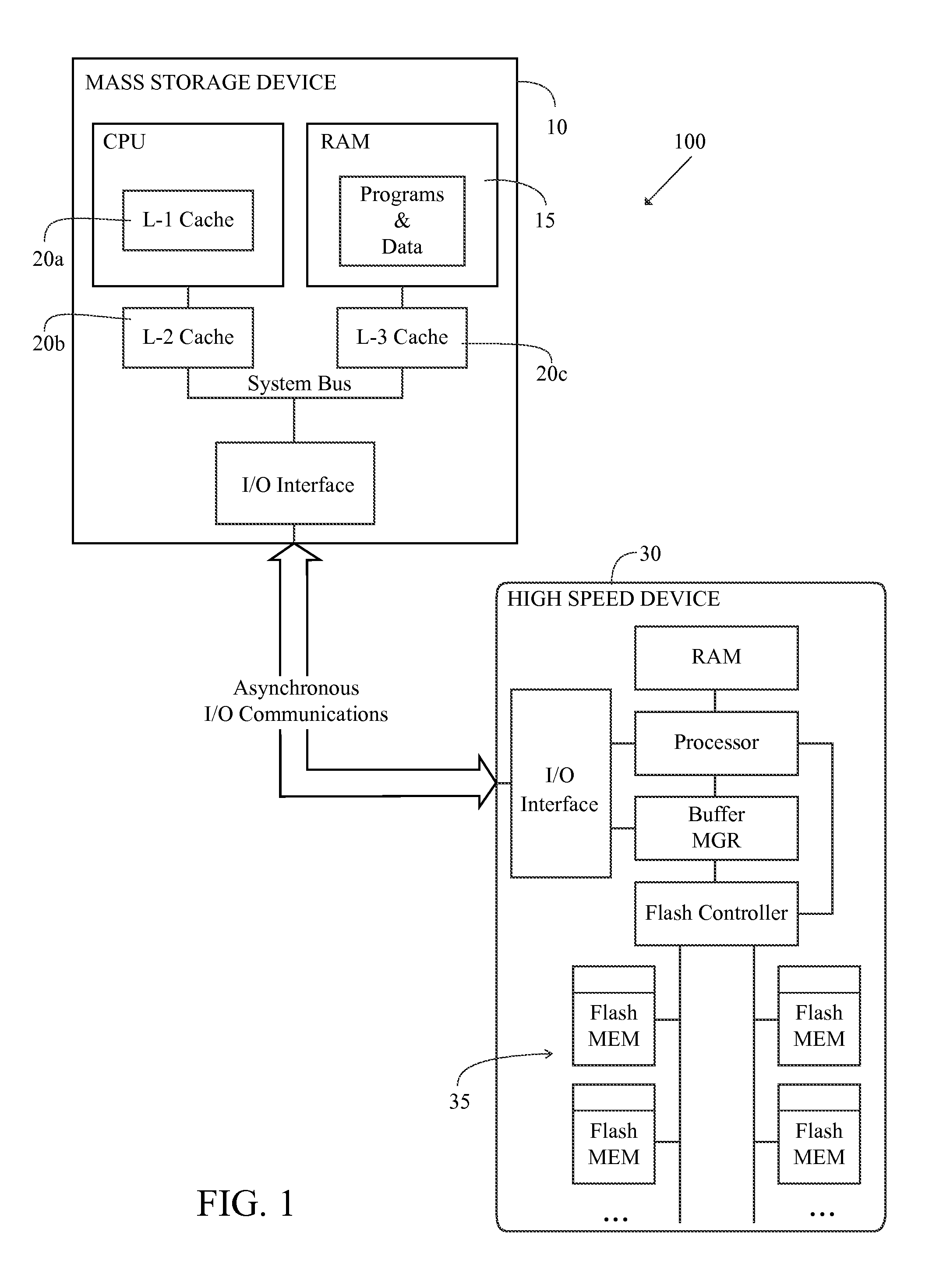Method for asynchronous population of data caches used with mass storage devices
a mass storage device and cache technology, applied in the field of computer system cache resources, can solve the problems of complex type of “opportunistic” cache population, transfer of data to high-speed devices, read from main memory or hard disk, etc., and achieve the effect of minimizing overhead, minimizing load placed on the slower device, and minimizing the load placed on the device being cached
- Summary
- Abstract
- Description
- Claims
- Application Information
AI Technical Summary
Benefits of technology
Problems solved by technology
Method used
Image
Examples
Embodiment Construction
[0046]The present invention populates a cache device in an asynchronous manner and counter-intuitively issues more input / output requests to a slower device in a manner that actually improves efficiency. Since the cache device population mechanism is asynchronous, the cache device population mechanism imposes minimal additional processing overhead on normal input / output requests (e.g. the cache device population mechanism does not have to delay processing while the cache device population mechanism copies the data nor does the cache device population mechanism have to inspect the destination memory buffers). Although the method for populating a high speed cache device in an efficient manner is asynchronous, the key to efficiency is a direct correlation of the asynchronous cache population with the normal input / output processing.
[0047]Modern mass storage devices are electro-mechanical in nature and orders of magnitude slower in access time than solid state devices such as memory or fl...
PUM
 Login to View More
Login to View More Abstract
Description
Claims
Application Information
 Login to View More
Login to View More - R&D Engineer
- R&D Manager
- IP Professional
- Industry Leading Data Capabilities
- Powerful AI technology
- Patent DNA Extraction
Browse by: Latest US Patents, China's latest patents, Technical Efficacy Thesaurus, Application Domain, Technology Topic, Popular Technical Reports.
© 2024 PatSnap. All rights reserved.Legal|Privacy policy|Modern Slavery Act Transparency Statement|Sitemap|About US| Contact US: help@patsnap.com










